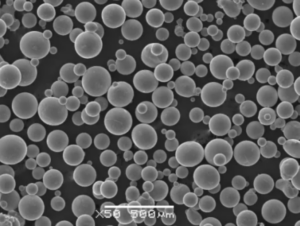M2 등급 소재인성, 내마모성, 절삭 성능의 탁월한 균형으로 널리 알려진 고속강(HSS)은 제조업계에서 최고의 선택으로 각광받고 있습니다. 항공우주, 자동차, 정밀 엔지니어링 등 어떤 분야에서든 M2 등급 소재의 뉘앙스를 이해하면 프로젝트의 성과를 높일 수 있습니다.
이 종합 가이드에서는 M2 등급 재료에 대해 자세히 살펴보고 구성, 특성 및 응용 분야와 함께 특정 금속 분말 모델을 비교합니다. 이 글은 숙련된 엔지니어든 처음 재료를 접하는 사람이든 누구나 흥미를 갖고 정보를 얻을 수 있도록 맞춤 제작되었습니다.
M2 등급 소재 개요
M2 등급 소재는 공구 및 금형 분야에서 널리 사용되는 다용도 고속강입니다. 주로 텅스텐과 몰리브덴으로 구성되며 탄소, 크롬, 바나듐, 코발트가 균형 있게 혼합되어 있어 단단한 재료를 고속으로 절단하고 성형하는 데 이상적입니다. M2강은 인성, 홍경도(고온에서도 경도를 유지), 내마모성이 뛰어나 고성능 소재를 필요로 하는 산업에서 많이 사용하는 것으로 알려져 있습니다.
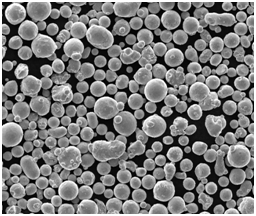
M2 등급 소재의 구성
M2 등급 소재의 구성은 성능에 결정적인 영향을 미칩니다. 다음은 M2 등급 강재에서 발견되는 일반적인 원소의 분석입니다:
| 요소 | 구성 (%) | 머티리얼에서의 역할 |
|---|---|---|
| 탄소(C) | 0.78-0.88 | 경도와 강도, 특히 내마모성을 높입니다. |
| 크롬(Cr) | 3.75-4.50 | 내식성, 경도 및 인성을 향상시킵니다. |
| 텅스텐(W) | 5.50-6.75 | 적색 경도를 제공하여 강철이 고온에서도 경도를 유지할 수 있도록 합니다. |
| 몰리브덴(Mo) | 4.50-5.50 | 고온 강도와 인성을 개선하는 동시에 내마모성을 위한 탄화물 형성을 돕습니다. |
| 바나듐(V) | 1.75-2.20 | 미세 탄화물을 형성하여 내마모성과 전반적인 인성에 기여합니다. |
| 코발트 (Co) | 0.00-1.00 | 옵션으로 내마모성과 내열성을 강화합니다. |
| 철(Fe) | 잔액 | 합금에 구조적 무결성을 제공하는 기본 요소입니다. |
이러한 요소는 특히 고속 및 극한 조건에서 사용되는 분야에서 소재의 뛰어난 내구성과 성능에 종합적으로 기여합니다.
의 특성 M2 등급 소재
M2 등급 강철은 인성과 경도 사이의 균형이 잘 잡혀 있어 고응력 응용 분야에 이상적인 선택입니다. 주요 특성을 자세히 살펴보겠습니다:
1. 경도 및 내마모성
M2 등급 강철은 일반적으로 62-65 HRC(로크웰 경도계) 범위의 우수한 경도를 나타내며 마모와 변형에 대한 저항력이 뛰어납니다. 따라서 오래 지속되는 날카로움이 필요한 절삭 공구에 적합합니다.
2. 적색 경도
M2 등급 강철의 두드러진 특징 중 하나는 고온에서도 경도를 유지하는 적색 경도입니다. 따라서 M2는 마찰로 인해 공구가 뜨거워지는 고속 작업에 적합합니다.
3. 인성
M2 등급 소재는 높은 경도에도 불구하고 우수한 인성을 유지하여 고강도 작업 시 칩핑과 균열의 위험을 줄여줍니다. 경도와 인성 사이의 이러한 균형은 M2 강철로 만든 공구의 수명을 보장합니다.
4. 기계 가공성
M2 등급 강철은 다른 공구강보다 단단하지만 특히 어닐링 가공 시 가공성이 우수합니다. 따라서 제조업체는 이 소재를 정밀한 공구와 부품으로 성형할 수 있습니다.
5. 변형에 대한 내성
M2 등급 강철은 극한의 스트레스 상황에서도 변형에 강해 까다로운 환경에서도 일관된 성능을 보장합니다.
M2 등급 소재의 응용 분야
M2 등급 소재는 다목적성과 신뢰성으로 인해 다양한 산업 분야에서 사용되고 있습니다. 다음은 몇 가지 주요 응용 분야입니다:
| 산업 | 애플리케이션 | 설명 |
|---|---|---|
| 항공우주 | 절단 도구 | 제트 엔진 부품, 절삭 공구, 드릴링 장비 제조에 사용됩니다. |
| 자동차 | 엔진 구성 요소 | 엔진 밸브, 기어, 캠샤프트와 같은 내구성 및 내열성 부품을 제작하는 데 이상적입니다. |
| 제조 | 밀링 커터 | 일반적으로 밀링 커터, 탭 및 드릴 생산에 사용됩니다. |
| 도구 및 금형 제작 | 펀치 및 다이 | M2 등급 강철은 인성과 내마모성이 뛰어나 펀치, 금형 및 기타 성형 도구에 적합합니다. |
| 석유 및 가스 | 드릴링 장비 | 열악한 환경에서 높은 인성과 내마모성이 요구되는 드릴링 장비에 사용됩니다. |
| 금속 가공 | 톱날 | 고속 톱날은 M2의 경도와 날카로운 모서리를 유지하는 능력의 이점을 누릴 수 있습니다. |
| 정밀 엔지니어링 | 게이지 및 측정기 | 치수 정확도를 유지하는 것이 중요한 정밀 도구에 사용됩니다. |
| 건설 | 석조 드릴 | 마모성 조건에서 높은 내마모성과 인성이 요구되는 석공 드릴 및 기타 공구에 이상적입니다. |
| 전자 제품 | 고성능 시스템을 위한 방열판 | 고온에서 구조적 무결성을 유지하는 능력으로 인해 열 관리 애플리케이션에 활용됩니다. |
| 섬유 산업 | 커팅 블레이드 | 날카롭고 내마모성이 강한 칼날이 필요한 직물 및 기타 재료를 자르는 데 적합합니다. |
다양한 응용 분야는 다양한 고성능 및 까다로운 분야에서 M2 등급 소재의 적응성과 신뢰성을 강조합니다.
사양, 크기, 등급 및 표준
M2 등급 자료를 선택할 때는 사용 가능한 사양, 크기, 등급 및 표준을 이해하는 것이 필수적입니다. 자세한 내용은 다음과 같습니다:
| 사양 | 세부 정보 |
|---|---|
| ASTM A600 | M2 등급 소재를 포함한 고속 공구강의 표준 사양입니다. |
| DIN 1.3343 | 국제적인 상황에서 자주 사용되는 M2 등급 강철에 해당하는 유럽 표준입니다. |
| JIS SKH51 | 아시아 시장에서 널리 사용되는 M2와 유사한 일본 표준입니다. |
| ISO 4957 | M2 등급을 포함한 공구강에 대한 국제 표준입니다. |
| 사용 가능한 크기 | 일반적으로 6mm에서 250mm 범위의 원형 막대, 플랫 막대, 사각 막대로 제공됩니다. |
| 경도 등급 | 일반적으로 62~65 HRC가 일반적이지만, 특정 애플리케이션의 경우 더 낮은 등급도 사용할 수 있습니다. |
| 허용 오차 | 정밀 부품의 경우 등급에 따라 +/- 0.05mm까지 허용 오차가 엄격합니다. |
이러한 사양을 이해하면 특정 요구 사항에 적합한 M2 등급 소재를 선택하여 업계 표준을 준수하고 원하는 성능 특성을 달성하는 데 도움이 됩니다.


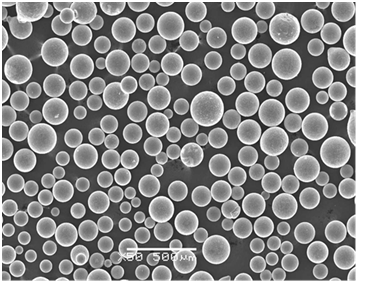
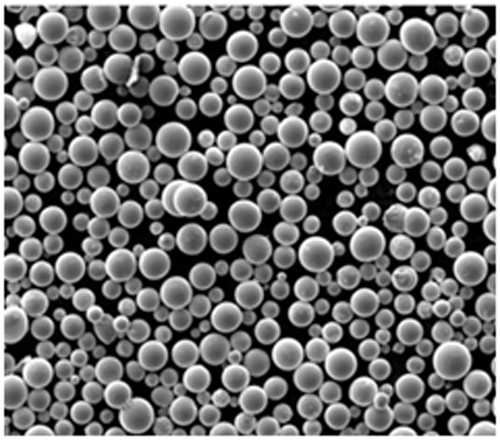
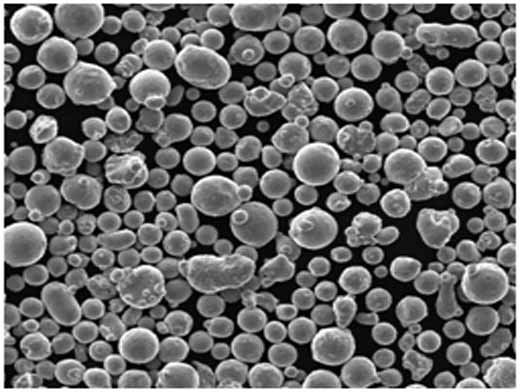
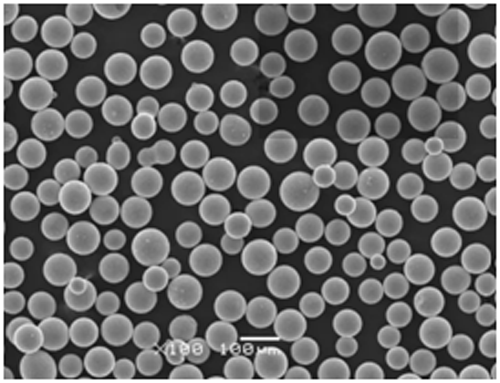
특정 금속 분말 모델 M2 등급 소재
분말 야금 및 적층 제조를 다룰 때는 올바른 금속 분말 모델을 선택하는 것이 중요합니다. 다음은 각각 고유한 특성과 용도를 가진 M2 등급 금속 분말 모델입니다:
| 파우더 모델 | 설명 | 일반적인 애플리케이션 |
|---|---|---|
| M2-22A | 정밀 부품을 위한 고순도, 미세 입자 파우더. | 정밀 툴링, 항공우주 부품. |
| M2-24B | 3D 프린팅의 복잡한 형상에 이상적인 향상된 유동성. | 적층 제조, 복잡한 다이 캐스팅. |
| M2-26C | 고밀도, 고강도 애플리케이션의 내마모성에 최적화되어 있습니다. | 자동차, 산업 기계. |
| M2-30D | 산소 함량이 낮아 우수한 기계적 특성을 보장합니다. | 고성능 커팅 도구. |
| M2-32E | 맞춤형 합금 혼합으로 인성을 강화하고 취성을 줄였습니다. | 극한 환경, 석유 및 가스를 위한 툴링. |
| M2-35F | 뛰어난 경도와 가장자리 유지를 위한 고탄소 변형. | 고속 톱날, 정밀 칼. |
| M2-38G | 나노 크기의 입자로 표면 마감과 미세 가공의 정밀도가 뛰어납니다. | 마이크로 툴, 전자 부품. |
| M2-40H | 적색 경도가 향상되도록 수정되어 고온 애플리케이션에 적합합니다. | 제트 엔진 부품, 고속 드릴. |
| M2-42I | 고성능 전자제품의 열 관리에 최적화되어 있습니다. | 방열판, 전자제품의 열 확산기. |
| M2-45J | 신속한 프로토타입 제작과 고정밀 3D 프린팅을 위한 초미세 분말. | 프로토타이핑, 복잡한 금형 제작. |
이러한 각 금속 분말 모델은 특정 산업 분야에 맞게 설계되어 다양한 제조 요구 사항에 맞는 다양한 특성을 제공합니다.
M2 등급 소재의 공급업체 및 가격 세부 정보
고품질의 M2 등급 자료를 얻으려면 올바른 공급업체를 선택하는 것이 중요합니다. 다음은 몇 가지 주요 공급업체 목록과 일반적인 가격 세부 정보입니다:
| 공급업체 | 지역 | 제품 제공 | 가격(대략) |
|---|---|---|---|
| 카펜터 기술 | 북미 | 다양한 M2 등급을 포함한 고속 강재. | kg당 $10-$15 |
| 케나메탈 | 글로벌 | M2 등급 공구강 및 관련 제품. | kg당 $12-$18 |
| A. Finkl & Sons Co. | 북미 | M2를 포함한 고성능 공구강. | kg당 $11-$16 |
| 볼러-우데홀름 | 유럽/글로벌 | 다양한 형태와 크기의 M2 등급 강철. | kg당 €10-€14 |
| 히타치 금속 | 아시아/글로벌 | M2를 포함한 고속 강철 분말. | kg당 ¥1,500-¥2,000 |
| SSAB | 유럽/글로벌 | 공구강 및 M2 등급 소재. | kg당 SEK 100-150 |
| 티센크루프 | 글로벌 | M2 등급 강철 및 기타 특수 소재. | kg당 $14-$20 |
| 아세리녹스 | 유럽 | M2 등급 옵션을 포함한 스테인리스 및 공구강. | kg당 €12-€17 |
| 합금강 국제 | 북미 | M2를 포함한 다양한 고속 및 공구강. | $13-$19 kg당 |
| 보스탈파인 | 글로벌 | M2 등급 재료를 포함한 공구강. | kg당 €11-€16 |
참고: 가격은 주문 수량, 형태(예: 바, 시트, 분말) 및 지역 시장 상황에 따라 달라질 수 있습니다. 가장 정확한 견적과 주문 가능 여부는 항상 공급업체에 직접 문의하는 것이 가장 좋습니다.
M2 등급 자료 비교: 장단점
M2 등급 소재는 높은 성능으로 유명하지만 다른 소재와 마찬가지로 장단점이 있습니다. 다음은 M2 등급 강철의 장점과 한계에 대한 자세한 비교입니다:
| 측면 | 장점 | 단점 |
|---|---|---|
| 경도 | 뛰어난 경도(62-65 HRC)로 절삭 성능을 향상시킵니다. | 열처리를 제대로 하지 않으면 부서질 수 있습니다. |
| 내마모성 | 높은 탄소 및 카바이드 함량으로 내마모성이 뛰어납니다. | 다른 공구강에 비해 비용이 높습니다. |
| 적색-경도 | 고온에서도 경도를 유지하여 고속 절단에 이상적입니다. | 모든 유형의 고온 애플리케이션에 적합하지 않습니다. |
| 인성 | 인성과 경도의 균형이 잘 잡혀 있어 깨짐이 적습니다. | 연강에 비해 가공하기가 더 어려울 수 있습니다. |
| 기계 가공성 | 어닐링 시 가공성이 우수합니다. | 최적의 특성을 얻기 위해 정밀한 열처리가 필요합니다. |
| 비용 | 제공되는 성능 대비 경쟁력 있는 가격. | 일부 저속 강재에 비해 재료비가 높습니다. |
| 다용도성 | 항공우주부터 자동차에 이르기까지 다양한 분야에서 널리 사용됩니다. | 특정 성적과 양식은 쉽게 이용하지 못할 수도 있습니다. |
이러한 장단점을 이해하면 올바른 애플리케이션에 적합한 M2 등급 소재를 선택하고 성능과 비용의 균형을 맞추는 데 도움이 됩니다.

자주 묻는 질문
다음은 M2 등급 자료에 대해 자주 묻는 질문 모음입니다:
| 질문 | 답변 |
|---|---|
| M2 등급 소재는 어떤 용도로 사용되나요? | M2 등급 소재는 절삭 공구, 금형, 펀치 및 기타 고성능 부품을 제조하는 데 사용됩니다. |
| M2 등급 소재는 다른 고속강과 비교했을 때 어떤 차이가 있나요? | M2는 경도, 인성 및 내마모성의 균형이 잘 잡혀 있지만 M42와 같은 다른 등급은 인성을 희생하는 대신 더 높은 경도를 제공할 수 있습니다. |
| M2 등급 강철의 일반적인 경도는 얼마인가요? | M2 등급 강철의 경도는 일반적으로 62~65 HRC입니다. |
| 고온 애플리케이션에 M2 등급 소재를 사용할 수 있나요? | 예, M2 등급 소재는 적색 경도로 잘 알려져 있어 고속 및 고온 애플리케이션에 적합합니다. |
| M2 등급 소재는 어떻게 열처리해야 하나요? | M2 등급 강철은 원하는 경도와 인성을 얻기 위해 특정 공정에 따라 열처리해야 합니다. |
| M2 등급 소재의 일반적인 형태는 무엇인가요? | M2 등급 소재는 원형 바, 플랫 바, 시트 등의 형태로 제공됩니다. |
| M2 등급 소재는 어디에서 구입할 수 있나요? | M2 등급 재료는 위에 나열된 Carpenter Technology, Kennametal 등의 공급업체에서 구매할 수 있습니다. |
| M2 등급 소재는 다른 강재보다 더 비쌉니까? | M2 등급 소재는 고성능 특성으로 인해 일부 공구강보다 더 비쌀 수 있습니다. |
결론
M2 등급 소재 은 경도, 내마모성, 적색 경도의 놀라운 조합으로 고속 강재 분야에서 두각을 나타냅니다. 고온과 응력 하에서 성능을 유지하는 능력 덕분에 항공우주 부품부터 절삭 공구에 이르기까지 다양한 응용 분야에서 선호되는 소재입니다.
금속 분말의 구성, 특성, 사용 가능한 특정 모델을 이해하면 M2 등급 재료를 효과적으로 활용하는 방법에 대해 정보에 입각한 결정을 내릴 수 있습니다. 공급업체를 선택하든 다른 재료와 비교하든, 장점과 한계를 종합적으로 파악하면 프로젝트에 가장 적합한 결과를 얻을 수 있습니다.
M2 등급 자료의 세부 사항과 요구 사항을 충족하는 방법에 대해 자세히 알아보려면 위의 세부 섹션을 자유롭게 살펴보세요.

